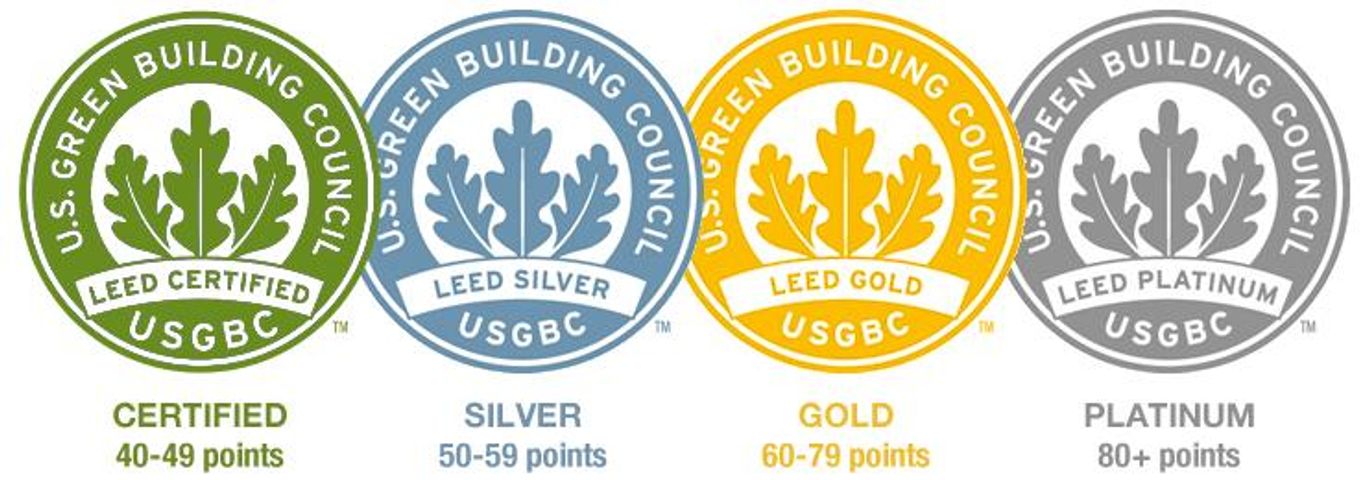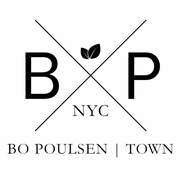10 Types of Green Building Certifications (and what they mean)

While it is certainly possible for a building to be “green” without any formal certification, many developers and property owners choose to seek certification in order to hold themselves accountable and maintain credibility with the public. Now that there are several different options for certification, this can get confusing for prospective homeowners who want to make an eco-friendly purchase. Here’s a breakdown of all the different green building certifications you’re likely to see on NYC buildings:
 Image courtesy of passiv.de
Image courtesy of passiv.deMy favorite – and what I’ve written extensively about on the blog – is Passivhaus, or ‘Passive House.’ This green building type does not require a traditional heating system, and it minimizes cooling through the use of shading and natural cross-ventilation. Passive Houses allow for heating and cooling energy savings up to 90% compared to typical building stock and over 75% compared to most new construction. They make efficient use of the sun, internal heat sources, and heat recovery, and a ventilation system supplies constant fresh air for superior air quality. Design standards are achieved through thermal bridge-free design, high-performance windows, ventilation with heat recovery, quality insulation, and airtight construction. A list of detailed criteria is available online through the Passive House Institute, and a list of NYC Passive House projects can be found on my blog here.
 Image courtesy of everbluetraining.com
Image courtesy of everbluetraining.comLEED, or Leadership in Energy & Environmental Design, is a green building certification program developed by the U.S. Green Building Council to recognize superior building strategies and best practices. To receive LEED certification, building projects satisfy prerequisites and earn points to achieve different levels of certification. The four LEED rating levels are Certified, Silver, Gold, and Platinum. The Certified level requires 40-49 points, and projects must earn 80 or more points to achieve Platinum status. Projects can earn points for water efficiency, location and transportation, indoor environmental air quality, and innovation, among other categories. There are separate rating systems for building design and construction, interior design, building operations and maintenance, neighborhood development, and homes. Information on the individual rating systems is available on the USGBC website.
American Cancer Society Healthy High Rise Building
Established in 2012, the American Cancer Society’s Healthy High-Rises program indicates residential buildings that have policies prohibiting smoking anywhere inside the building. Secondhand smoke can permeate walls in multi-unit residential buildings, posing health risks to non-smokers and requiring more maintenance on the whole building (including carpet cleaning, repainting, and removing the odor of smoke). Buildings that meet the criteria are given a decal for display in the front window, indicating that the residence is smoke-free. The first round of awardees included more than 2,700 housing units, and today tenants can search for available unitsin over 500 properties.
 Photo courtesy of wsj.com
Photo courtesy of wsj.comBattery Park City Authority Sustainable Construction Guidelines
In 1999, Bob Fox and Bill Browning began creating Battery Park City, a 92-acre planned community on Lower Manhattan’s west side. Their team created comprehensive residential, commercial, and institutional environmental guidelines for the community which provided a foundation for one of the densest concentration of green buildings in the world. The five major frameworks ensure ecologically responsible standards for Energy Efficiency, Indoor Environmental Quality, Materials and Resources, Water Conservation, and Site Management. The guidelines require on-site power generation, green roofs, the diversion of 80 percent of construction waste from landfills, and the treatment and re-use of rainwater and “black water” from toilets and other fixtures. The latest version of the BPCA guidelines is available online, and many of the buildings which meet the BPCA guidelines also qualify for LEED certification.
 Image courtesy of energystar.gov
Image courtesy of energystar.govENERGY STAR buildings use 35 percent less energy and cause 35 percent fewer greenhouse gas emissions compared to other buildings in the US. To earn ENERGY STAR certification, a building must meet strict performance standards set by the EPA and operate among the top 25 percent of similar facilities nationwide. Since 1999, tens of thousands of buildings and plants have earned the certification without sacrificing comfort of quality. There are 21 types of facilities that can earn the ENERGY STAR, including commercial and residential buildings. A registered architect or professional engineer must verify all applications, and the program is open to both new constructions and existing buildings.
 Image courtesy of enterprisecommunity.com
Image courtesy of enterprisecommunity.comThe Green Communities Criteria was first released in 2004 to advance the adoption of healthy design and building practices for affordable housing. The Criteria brings the benefits of sustainable construction practices to low-income families, allowing them to spend less money on utilities and have better access to transportation, quality food, and healthcare systems. Enterprise Green Communities Certification is available for any housing project that includes
affordable units. The project must meet the Green Communities Criteria, which are grouped into eight categories:
1. Integrative Design
2. Location + Neighborhood Fabric
3. Site Improvements
4. Water Conservation
5. Energy Efficiency
6. Materials
7. Healthy Living Environment
8. Operations, Maintenance, and Resident Engagement
The full set of criteria are available through the Enterprise Green Communities website.
National Green Building Standard
The National Green Building Standard provides practices for design and construction of green residential buildings, renovations, and land developments. The Standard is the result of a partnership between The National Association of Home Builders (NAHB) and the International Code Council (ICC) and contains four levels: Bronze, Silver, Gold, and Emerald. The main categories within the National Green Building Standard are:
- Lot and site development
- Resource efficiency
- Energy efficiency
- Water efficiency
- Indoor environmental quality
- Operation, maintenance, and building owner education
Practices within these categories are assigned point values, and the points earned determine which level of certification a project is eligible for. A Green Scoring Tool is provided to walk projects through the certification process, and builders can purchase a copy of the standard for $17.95.
 Photo courtesy of dattner.com
Photo courtesy of dattner.comThe NYC Green Schools Guide was developed to encourage the sustainable design, construction, and operation of new schools, modernization projects, and school renovations. The Guide ensures that NYC schools comply with Local Law 86 of 2005 (New York City’s Green Building Law), which requires the use of sustainable practices for all public design and construction projects. The NYC Green Schools Guide includes a rating system which is just as stringent as the requirements for a LEED Certified rating, and the 28 credits required for all projects are sufficient to earn the 26 of the 69 available points required to achieve a LEED Certified rating. Requirementsinclude construction activity pollution prevention, sustainable building layout, public transportation access, light pollution reduction, and energy and water conservation.
NYC High Performance Building Guidelines
Established in 1999 by the New York City Department of Design and Construction, the NYC High Performance Building Guidelines set out best practices for designing, constructing, and operating energy and resource-efficient facilities. High performance buildings maximize operational energy savings while improving the health and safety of visitors and limiting the detrimental effects on the environment. The extensive list of guidelines includes standards for indoor air quality, noise control, water quality and reuse, energy load management, and operations and maintenance.
NYSERDA Multifamily Performance Program
The New York State Energy Research and Development Authority has Multifamily Performance Programs for new and existing constructions which allow owners to save on energy cost and reduce the carbon footprint of buildings. The MPP for Existing Buildings provides financial incentives for owners of buildings with 5+ units and 4+ floors to design a customized energy solution with the help of an energy efficiency expert. The resulting Energy Reduction Plan will create an energy savings of 15 percent. The MPP for New Construction lets owners incorporate energy efficiency measures into the design of buildings, including appropriate insulation, efficient heating and cooling systems, and energy-saving appliances and lighting. The New Construction program also pairs owners with energy efficiency experts to guide them through the process and includes financial incentives.
If you want to learn more about the benefits of living in a green building, or would like to purchase a home in a certified green building, please let me know.
About the Business
Have a question? Ask the experts!
Send your question

